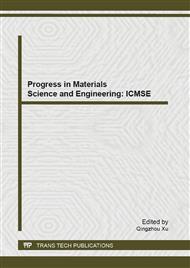p.845
p.854
p.860
p.868
p.875
p.880
p.886
p.893
p.898
Low-Cycle Fatigue Behavior of TP347H Austenitic Stainless Steels at Room Temperature
Abstract:
Low-cycle fatigue (LCF) tests were performed with different strain amplitudes from 0.4% to 1.2% at room temperature (RT) to investigate fatigue life and fracture morphology of TP347H austenitic stainless steels. The results show that there is initial cyclic hardening for a few cycles, followed by continuous softening until fatigue failure at all strain amplitudes in stress response curves. The fatigue life of the steels follows the strain-life Coffin-Manson law. Fracture morphology shows that fatigue cracks initiate from the specimen free surface instead of the interior of the specimen, and ductile fracture appears during LCF loading. More sites of crack initiation and quicker propagation rate of fatigue crack at high strain amplitudes than those at low strain amplitudes are responsible for reduced fatigue life with the increasing of strain amplitude.
Info:
Periodical:
Pages:
875-879
Citation:
Online since:
October 2013
Authors:
Price:
Сopyright:
© 2013 Trans Tech Publications Ltd. All Rights Reserved
Share:
Citation:


